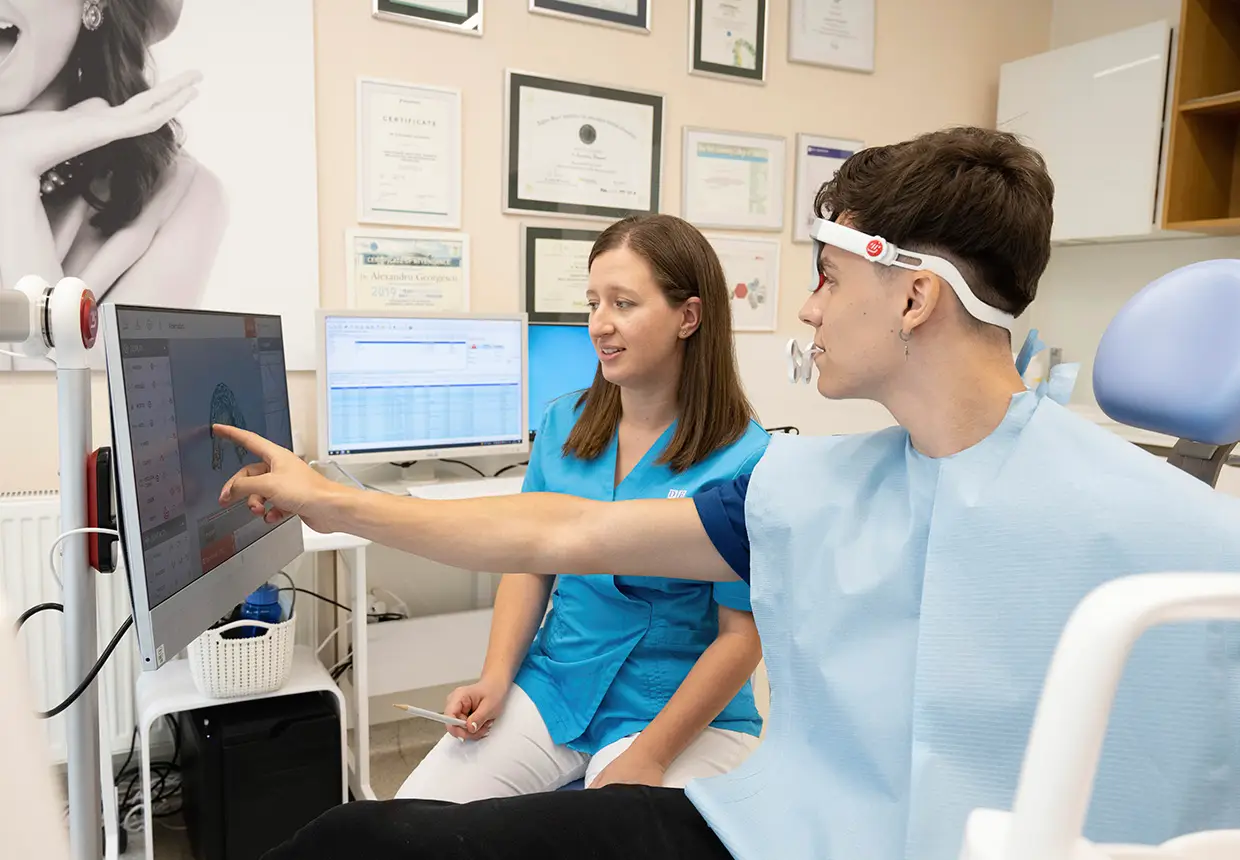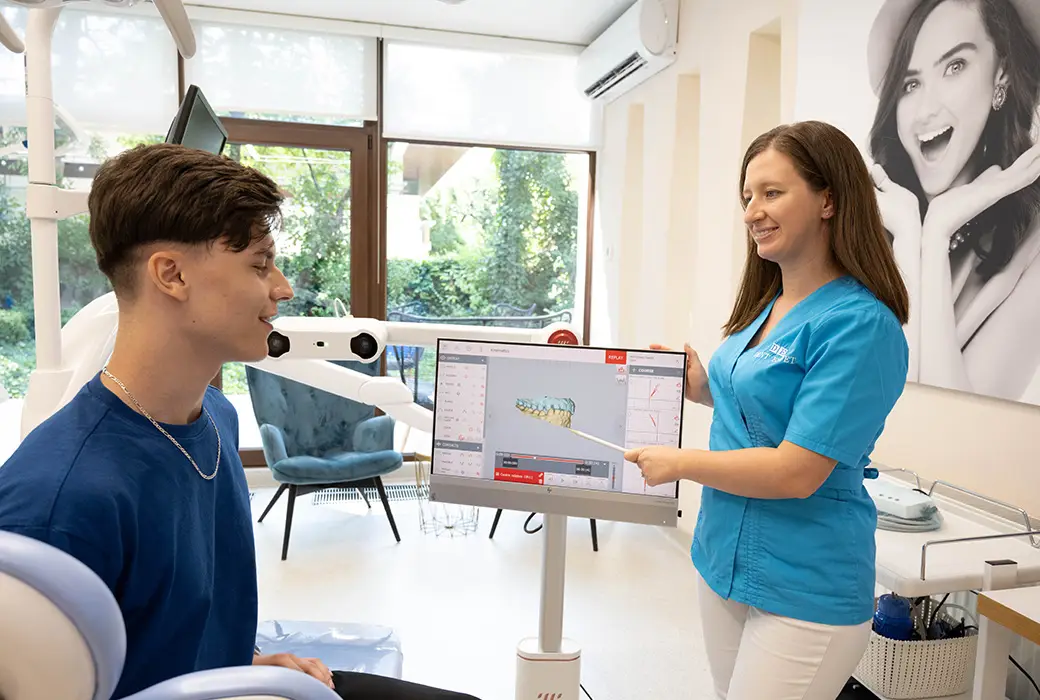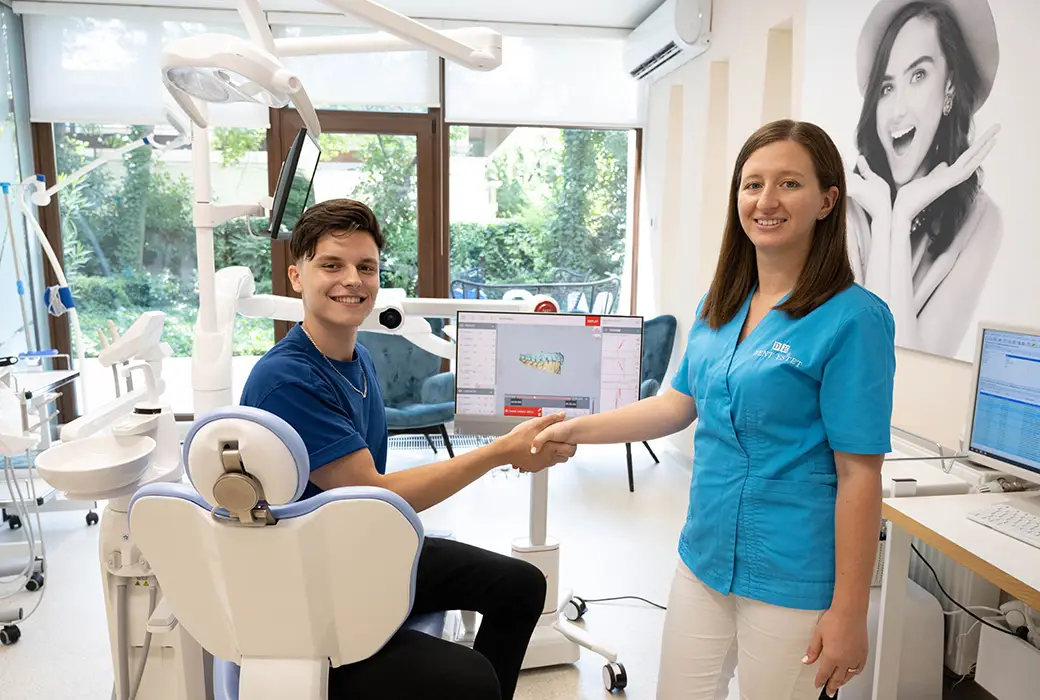
What is bruxism?
Symptoms and treatment of bruxism
For many people, bruxism is an unconscious issue that may sometimes be detected when they are alerted to the loud grinding noise they make while sleeping or even during a routine dental check-up, when it is discovered that the enamel on their teeth is damaged.
Even though in some cases teeth grinding does not endanger dental health, it is important to know when this condition can lead to complications and when specialized treatment is necessary. In the following, you will learn about the main symptoms of bruxism, as well as how it can be treated and prevented correctly.
What is bruxism?
Bruxism is a condition characterized by teeth grinding, rubbing, or clenching. Gradually, this habit can lead to tooth pain or dental sensitivity and, in some cases, even to tooth wear. As the condition progresses, dental tissues are affected and gum recession can occur.
There are two types of bruxism:
- Daytime bruxism – Individuals with daytime bruxism may grind or clench their teeth during the day without realizing it;
- Nighttime bruxism – This is also associated with other sleep disorders, such as snoring and apnea (brief pauses in breathing).
Both moderate and severe bruxism need to be treated in a timely manner as they can lead to serious dental issues and other complications.
Causes of bruxism, risk factors, and possible complications
Although the causes of bruxism are not yet fully understood, there are several genetic, physical, or psychological factors associated with this condition:
- stress, anxiety, frustration, anger;
- dental malocclusion (improper alignment of the teeth);
- insufficient rest;
- disproportionate development of the jaw bones;
- transition from primary to permanent teeth;
- sleep disorders.
Risk Factors
The factors that may increase the risk of bruxism include:
- high levels of stress or anxiety;
- age – bruxism is common among children and may disappear by adolescence;
- personality type – competitive, aggressive, or hyperactive individuals have a higher risk of bruxism;
- certain medications – bruxism can be a side effect of medications such as antidepressants;
- smoking, coffee, or alcohol consumption;
- heredity;
- bruxism can also be a symptom associated with nerve and facial muscle issues.
Sometimes, bruxism is also associated with other conditions, such as Parkinson’s disease, dementia, epilepsy, gastroesophageal reflux disorder, attention deficit/hyperactivity disorder (ADHD), or night terrors.
Possible Complications
Prevention is better than cure, so we recommend visiting a dentist if you experience any of the symptoms above. Otherwise, you may develop complex conditions such as:
- damage to teeth, dental crowns, or the jaw;
- headaches;
- facial or jaw pain;
- temporomandibular joint disorders.
What are the symptoms of bruxism?
The main symptoms of bruxism may include:
- teeth grinding and clenching – the sound is so loud it may wake you up from sleep;
- chipped and weakened teeth;
- enamel damage;
- dental sensitivity and severe tooth pain;
- facial, neck, or jaw pain;
- headaches, especially around the temples;
- weakening or tightening of the jaw muscles;
- sleep disturbances.
It is important to visit a dentist if you have identified the symptoms mentioned above, especially if they persist over time and do not improve.
How is bruxism diagnosed?
Bruxism is diagnosed following an examination by a dentist, who will assess the condition of the teeth over several visits to determine if changes have progressed and if a specific treatment is necessary.

If bruxism is suspected, the dentist will try to determine the exact cause and whether the condition is due to medications or associated with sleep disorders. In addition to this information, the dentist will perform a dental examination to assess if there is increased sensitivity in the jaw muscles or signs of dental wear.
Besides the dental examination, a dental X-ray or computed tomography (CT) scan may be conducted to evaluate the condition of the tooth roots and the jawbone.
How is bruxism treated?
Bruxism in children may resolve as they grow older without the need for treatment. In adults, teeth grinding is often not severe enough to require treatment. However, if it is a serious issue, the dentist must identify the underlying cause of the bruxism to recommend an appropriate treatment.

After the dental examination, the dentist may suggest one of the following treatments for bruxism:
- use of a mouthguard – a mouthguard is a plastic device that molds to the teeth and serves to separate the teeth and prevent damage from grinding or clenching;
- dental crowns – if the enamel is damaged and dental wear has increased sensitivity, dental crowns may be necessary to reshape the appearance of the teeth.
At the same time, considering that bruxism can also be caused by lifestyle or personality types, treatment may include methods to address these issues, such as:
- stress and anxiety management – if these are the primary causes of bruxism, relaxation strategies like meditation may be recommended. If anxiety is the issue, visiting a therapist may be necessary.
- occlusion correction – the dentist needs to check if the dental occlusion (bite) is correct and explain the proper position of the jaw.
Other treatment methods may include adjusting medications if they have caused bruxism, treating sleep disorders, or addressing other health issues associated with bruxism.
How can bruxism be prevented?
As mentioned above, bruxism does not always require treatment and may resolve on its own. However, it's important to note that there are several remedies that can be very helpful in the healing process or in preventing this condition. These remedies include:
- reducing stress – you can try various methods, such as listening to music while engaging in different activities or even physical exercise or meditation;
- avoiding excessive consumption of caffeinated or alcoholic beverages, especially in the evening, as they can exacerbate bruxism symptoms;
- avoiding chewing gum, as this habit causes the jaw muscles to become increasingly tense and may lead to the development of teeth clenching.
Also, try to be aware of moments when you grind your teeth and, if possible, place the tip of your tongue between your teeth. As you practice this exercise, the jaw muscles will gradually begin to relax.
Visit your dentist regularly, as it can help you identify the early signs of bruxism.
Bruxism can have multiple causes, and it is necessary for the dentist to correctly identify these causes and recommend the appropriate treatment, especially if it is a serious condition. To detect bruxism in time and prevent the onset of this condition, regular dental check-ups are required.



